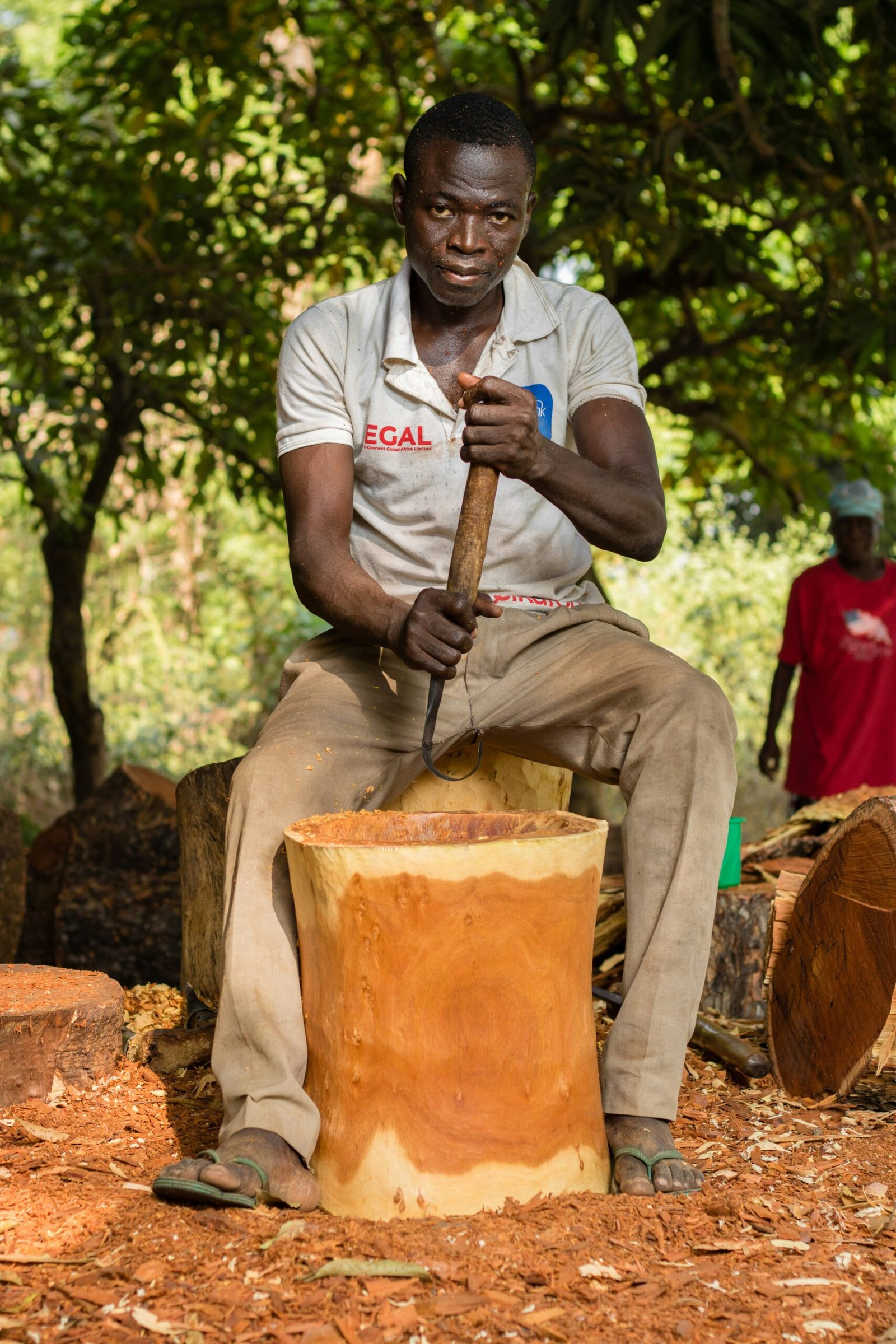What is Akara?
Akara is a traditional West African dish made primarily from black-eyed peas, which are known for their rich nutritional profile and distinctive flavor. Ground to a smooth paste, the peas are often combined with a mix of spices and seasonings before being deep-fried into golden-brown fritters. The origins of akara can be traced back to various cultures across West Africa, particularly in countries such as Nigeria and Ghana, where the dish has become an integral part of the local cuisine.
The significance of akara extends beyond its taste; it showcases the resourceful use of legumes, especially in regions where they provide a vital source of protein. As a versatile food, akara is celebrated not only for its flavor and textural contrast—crisp on the outside and soft on the inside—but also for its adaptability, allowing for variations that may include ingredients like onions, peppers, and spices, enhancing its flavor profile further.
Typically consumed as a breakfast item, akara is often served alongside bread or a spicy sauce, making it a hearty and satisfying meal to start the day. It also holds a special place as a popular street food, enjoyed as a snack at social gatherings, festivities, and markets. The delightful aroma of freshly cooked akara wafting through the streets draws people in, creating a sense of community and shared experience as individuals gather to enjoy this beloved dish.
With its cultural significance and versatility in preparation, learning the best akara recipe offers not only a delicious addition to one’s culinary repertoire but also a glimpse into the rich tapestry of West African food traditions. Regardless of where you might be located, cooking fast akara at home allows you to experience a taste of a diverse culinary heritage. This cherished dish continues to be a staple, bridging gaps between generations and cultures.
Ingredients Needed for Making Akara

To create the best akara, it is essential to assemble the right ingredients. The primary component of this delightful homemade akara recipe is black-eyed peas, which serve as the base for the dish. These legumes are not only rich in protein but also lend a unique flavor and texture to the akara. When preparing the beans, it is important to soak them overnight, as this softens their outer skins, making them easier to blend.
In addition to black-eyed peas, finely chopped onions are a crucial ingredient. Onions bring sweetness and depth to the flavor profile. A common substitute could be shallots, which offer a milder taste. Green peppers are also integral to the recipe, adding vibrant color and enhancing the overall flavor. Sweet bell peppers can be used in place of traditional green ones if a milder taste is preferred.
The addition of spices further elevates the akara. Salt is essential, as it enhances the overall flavor, while spices such as cayenne pepper or white pepper can be added for a touch of heat. An alternative could be paprika, which offers a smokier element without excessive spiciness. Some recipes may also include herbs like parsley or spring onions to add a hint of freshness.
Finally, the frying oil is a significant component. A neutral oil, such as vegetable or canola oil, is typically used to ensure a crispy exterior without overpowering the taste of the akara. For those seeking a healthier option, air frying could be considered, but traditional frying provides the best texture. Gathering these ingredients will equip you to cook fast akara at home, ensuring a delightful outcome.
Step-by-Step Preparation Method

To prepare the best akara at home, begin by gathering the necessary ingredients: black-eyed peas, onions, bell peppers, salt, and a generous amount of oil for frying. Start by soaking the black-eyed peas in water for about 6 hours or overnight to soften them. This will make the peeling process easier.
Once soaked, drain the peas and place them in a blender. Add a small amount of water to help with blending and pulse until the mixture is smooth but still thick. It’s important not to add too much water as this will affect the texture of your akara. At this stage, you can incorporate chopped onions and bell peppers into the batter for added flavor. To further enhance the taste, season the mixture with salt according to your preference.
Next, the shaping process begins. Using your hands or a tablespoon, scoop out portions of the batter and shape them into small balls. Maintain a consistent size to ensure even cooking. It’s advisable to wet your hands occasionally to prevent the batter from sticking. Preheat your frying oil in a deep pan until it reaches a temperature suitable for frying. A test to determine if the oil is hot enough is to drop a small piece of the batter into the oil; it should float and sizzle when ready.
Carefully drop the shaped akaraw into the hot oil, making sure not to overcrowd the pan as this can lower the oil temperature, leading to soggy akara. Fry until golden brown, turning them occasionally to achieve an even color. Once cooked, remove the akara and drain them on paper towels to absorb excess oil. Following these steps will help you cook fast akara at home, ensuring a delightful treat that captures the essence of West African cuisine.
Serving Suggestions and Variations
Akara, a popular West African dish, offers numerous serving suggestions and variations that can elevate its taste and presentation. Traditionally, these fried bean cakes are enjoyed as a breakfast option, but their versatility allows them to be served as snacks, appetizers, or part of a main meal. One excellent way to enjoy homemade akara is by pairing it with spicy dipping sauces, such as a tangy pepper sauce or a creamy avocado dip. The contrasting flavors can enhance the overall experience and provide a delightful kick to the dish.
Another appealing option is to serve akara alongside fresh salads, which can provide a refreshing balance to the rich, savory bean cakes. A simple green salad drizzled with a light vinaigrette can create a wonderful combination, while a coleslaw could introduce crunch and zest. Additionally, consider serving akara as part of a larger platter that incorporates other West African delicacies. This allows for an exciting culinary exploration where diners can enjoy various textures and flavors.
For those looking to customize their akara recipe, numerous variations can make the dish unique. Incorporating ingredients such as herbs, spices, or even vegetables can personalize the flavor profile. Adding chopped spinach or bell peppers not only enhances the nutritional content but also adds vibrant color to your homemade akara. For a different spin, consider experimenting with spices like cumin or smoked paprika, which can introduce depth and complexity to the dish.
Ultimately, the best akara experience comes from creativity and personal preference. Whether served simply with a delicious sauce or creatively infused with new ingredients, this delightful dish promises an enjoyable and satisfying treat for anyone willing to explore its potential.


